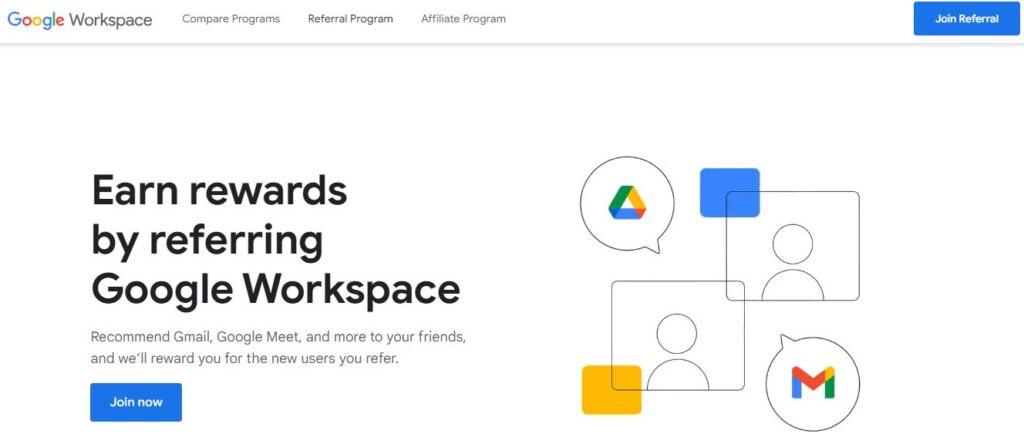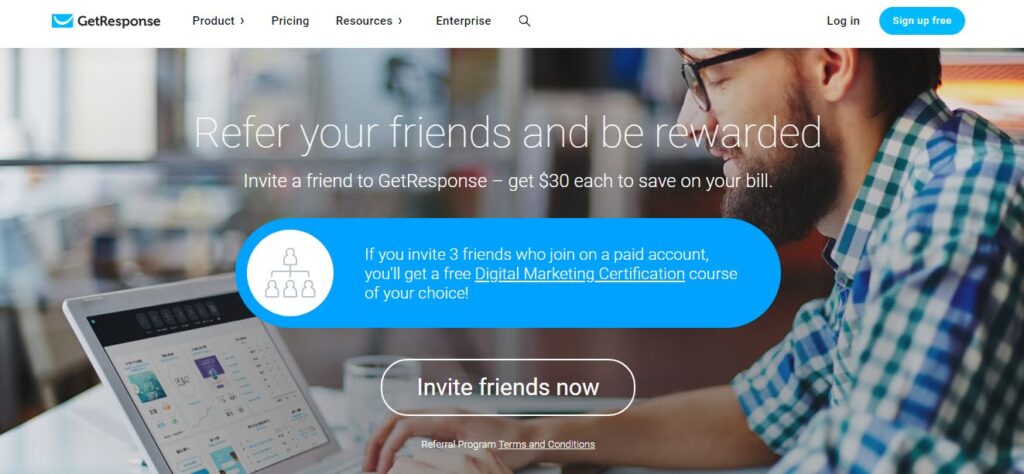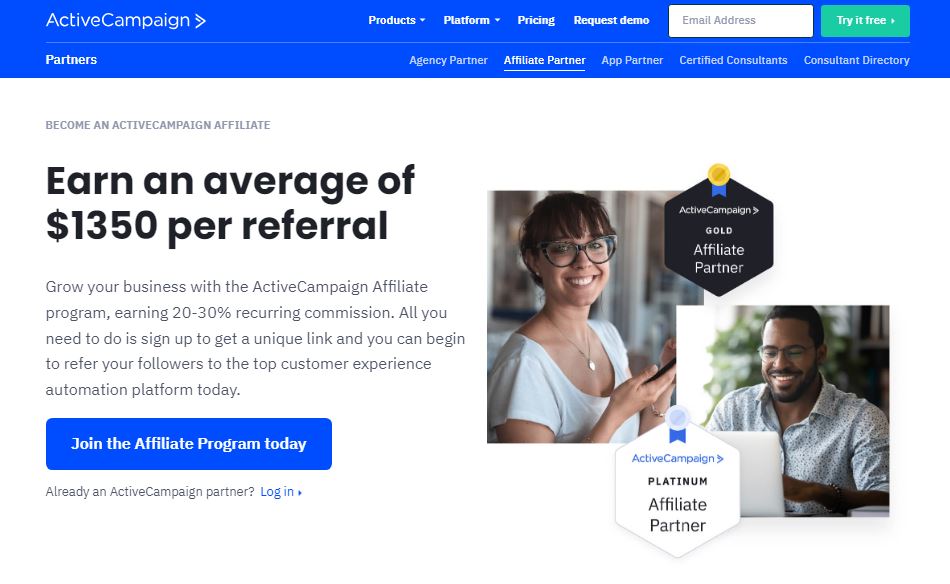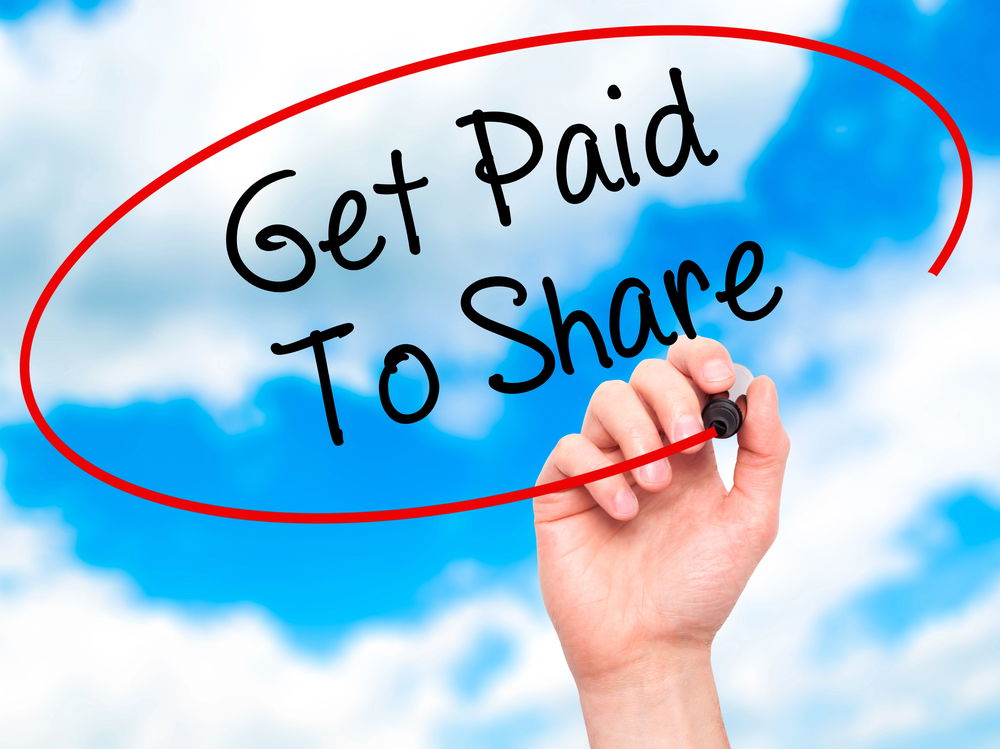Table of Contents
Key Insights from Standout B2B Referral Program Examples
- A referral program is a system that encourages an existing customer to bring a new one to your business.
- You can create a B2B referral program using cash, credits, or other benefits as incentives.
- The most successful programs cater to what your business customers need and want.
Creating a solid marketing strategy for your B2B operation can be as simple as turning to your existing customers and using their reach to create new leads. That’s because everyone trusts that a friend or colleague won’t lead them astray, especially when it comes to a service that can be mutually beneficial.
This is the essence of the referral process, or as people used to call it back in the day, “word-of-mouth” marketing: creating a program that entices your happy customers to invite more people to enjoy your services while getting a little something in return.
Here, I explain how a well-established referral program can give your company the boost it needs through the lens of 3 successful B2B referral program examples.
3 Successful B2B Referral Program Examples
Let’s take a look at some of the most impactful B2B referral program examples out there and see what we can learn:
Case Study #1: Google Workspace

Overview
Google is currently one of the largest tech companies. However, back in 2006, when it was still synonymous with online search, the company invested in referral marketing to launch its Google Suite (now known as Google Workspace).
The referral program is ongoing to this day, where you can earn rewards for having an eligible customer sign up through your referral link. You can earn $8 for a Business Starter plan sign-up, $15 for a Business Standard plan sign-up, and $23 for a Business Plus plan sign-up
Lessons for Your B2B Business
- No business is too big for a referral program: Even though Google is established enough to do quite well on its merit, the persistence of its referral program indicates it’s still working!
- Grading the referral rewards is a good idea: Think of it as taking out a percentage of your earnings that corresponds with every subscription tier. That way, you’re not losing money trying to get more customers to join.
Case Study #2: GetResponse

Overview
GetResponse is an email marketing platform that also builds automation processes, forms, as well as landing sites for businesses.
Aside from a $30 instant reward that goes to both the new and satisfied customers making the referral, there’s another unique tier to this reward. Once a business makes three successful referrals, they’re awarded a free Digital Marketing Certification.
These courses usually go for $200, and they’re an exclusive perk of the GetResponse marketing system.
Lessons for Your B2B Business
- Don’t just use tokens or cash as referral program incentives: See what your business does best and use it as a lure for your current and potential customers.
- The quality of your referral incentive can be one of your marketing channels: If you use an exclusive perk as a referral reward, it’s likely to lead to more referrals.
Case Study #3: ActiveCampaign

Overview
Similar to GetResponse, ActiveCampaign is a platform that offers businesses email marketing, automation, and customer relationship management (CRM) services.
The referral program is quite simple; you refer a new customer, they get $10 in their credit, and you get:
- $25 if they join a Lite plan
- $50 if they join a Plus plan
- $75 if they join a Professional plan
- $100 if they join an Enterprise plan
The new customer must commit for at least 60 days so you can receive your reward, which is fair enough for the company. You receive your payment via Paypal.
Lessons for Your B2B Business
- Sometimes, cash is the best incentive: If you have the money to spare, your referral program success could hinge on that extra bit of cash you’ll spend on your program.
- Make sure referred customers are included: The dual-sided nature of referral program rewards is an excellent way to keep them going.
Translating B2B Referral Success into Actionable Strategies
Now that I’ve laid out the programs, here are some actionable strategies you can implement in your next B2B marketing spree:
Tip 1: Make the Entire Program Simple
Referral programs work when they’re both accessible and rewarding. If the program has the person making the referral jumping through hoops, no matter how big the reward is, it’s unlikely they’ll bother.
Use a referral code or custom links to simplify the process, and make the referral incentives at the forefront of your program landing page.
Tip 2: Track Referral Sales
When you track referrals, you understand who your most valuable customers are. Their ability to generate high-quality leads can help you in the future if you decide you need referral partners to collaborate with.
Keeping in touch with your referred clients is also just as important. Their “welcome gift” shouldn’t be the last incentive they receive from you.
Tip 3: Reward Your Brand Advocates with What They Want
Depending on the kind of business you run or the service you offer, your referral program should be able to reflect your customers’ needs. While it never goes wrong to resort to a cash reward, offering a business-specific, exclusive perk can also drive interest in your referral program.
The Impact of a Thoughtfully Crafted Referral Program
From my experience as a B2B marketing strategist, I can say that solid referral programs are a huge asset for a mid-sized business. Yet, only 3 out of 10 businesses make use of referral marketing, which is a huge waste of potential.
There are tangible benefits to starting a successful referral program, including:
- It’s a cheap strategy for customer acquisition: Using your resources for an outbound marketing campaign is definitely more expensive than setting up a referral program. Your current, loyal customers share your values, don’t need convincing, and can boost your sales while getting a referral reward, win-win!
- Your old and new customers are more likely to stick with your business. This is called lifetime value (LTV) and is usually higher for referrals than lead conversions of other kinds.
- Your leads can be converted more easily: A customer who’s heard great things about your business from someone they trust is likely to commit to and use your service. This is called a high-intent opportunity, and it’s possible through a strong referral program.
The Bottomline
You could have an excellent sales team that does outreach perfectly, but nothing beats the proven power of a well-structured B2B referral program. It not only cuts a large chunk off customer acquisition costs, but it also helps ingratiate your existing customers, giving them a bigger reason to stay with you and bring along friends!
As I mentioned, no company is too big for a solid referral program. You can always use cash as an incentive, but that doesn’t mean you should go bankrupt over it. Find what your customer base deems valuable and give them what they want.
If you’d like to discuss the right kind of B2B referral your company needs, schedule a call with me so we can discuss it in detail. If you have any questions, contact a Vivian Agency representative here.




